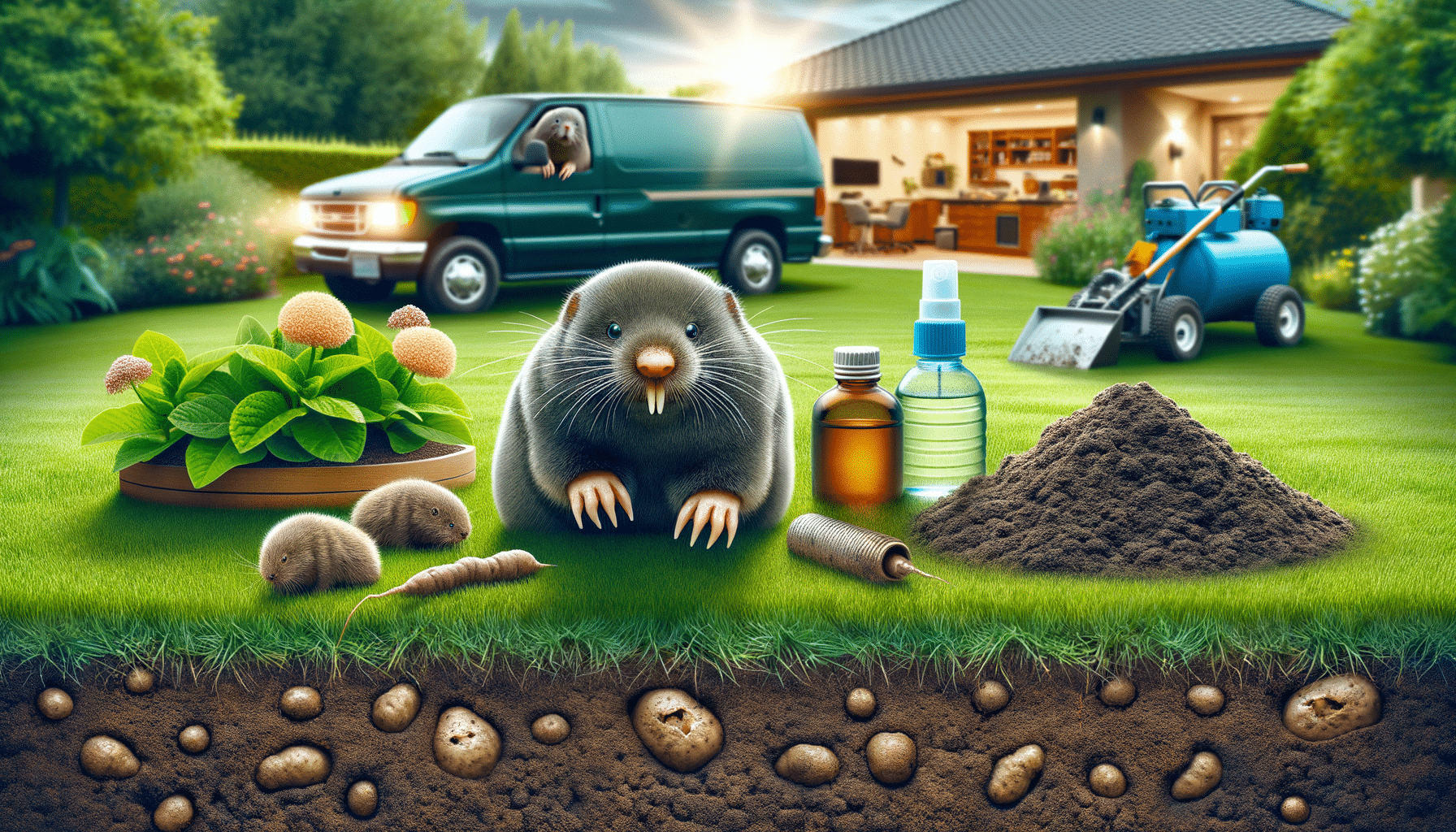
Simple Techniques to Get Rid of Moles and Gophers in Your Yard
Introduction to Mole and Gopher Challenges
Gardening enthusiasts often find themselves battling with moles and gophers, whose underground activities can wreak havoc on a well-maintained lawn or garden. These creatures, despite their small size, can cause significant damage by creating tunnels and mounds, potentially harming plant roots and creating unsightly landscapes. Understanding the behavior of moles and gophers is crucial in addressing the problem effectively and humanely.
Moles primarily feed on insects, which means they are inadvertently beneficial by controlling pest populations. However, their tunneling can be a nuisance. Gophers, on the other hand, are herbivores, and their feeding habits can directly damage plants. This article explores natural techniques to manage these animals, focusing on eco-friendly and non-lethal methods that align with sustainable gardening practices.
Natural Techniques to Get Rid of Moles
Natural methods to deter moles focus on creating an environment that is less attractive to them. One effective approach is to utilize plants that moles find unappealing. For instance, planting marigolds or castor beans around the garden can help keep moles at bay due to their strong scents, which moles tend to avoid.
Another strategy involves using household items like coffee grounds or cayenne pepper. Sprinkling these substances into molehills or tunnels can irritate the moles, encouraging them to relocate. It’s essential to apply these regularly, especially after rain, to maintain their effectiveness.
Additionally, maintaining a healthy lawn can naturally deter moles. Regularly aerating the soil and controlling insect populations can reduce the food sources that attract moles. By combining these natural techniques, gardeners can effectively manage mole populations without resorting to harmful chemicals.
Exploring Mole Repellents
Mole repellents are available in various forms, including granules, sprays, and ultrasonic devices. These products aim to create an inhospitable environment for moles, encouraging them to leave the area. Granular repellents often contain natural ingredients like castor oil, which can be spread across the lawn to deter moles through soil absorption.
Sprays are another option, providing a quick and easy way to treat affected areas. These typically need to be reapplied after rain to maintain their effectiveness. Ultrasonic devices, on the other hand, emit sound waves that are unpleasant to moles, driving them away from the treated area. While these devices can cover larger areas, their effectiveness can vary depending on soil type and the layout of the land.
When choosing a mole repellent, it is crucial to consider the size of the area and the severity of the infestation. Combining different types of repellents may offer the most comprehensive solution, ensuring moles find the environment less inviting.
Understanding Mole Repellent Services
For those who prefer professional assistance, mole repellent services offer a convenient solution. These services typically involve a detailed assessment of the property to identify the extent of the mole problem and the most effective treatment plan. Professionals use a combination of repellents and techniques tailored to the specific needs of the garden or lawn.
These services often provide ongoing maintenance plans, ensuring that the mole population remains under control throughout the year. This can be particularly beneficial for larger properties or areas with persistent mole problems. By opting for professional services, homeowners can save time and effort while ensuring effective and humane mole management.
Choosing a reputable service provider is essential to ensure the use of environmentally friendly methods. Homeowners should inquire about the types of repellents used and the overall approach to ensure it aligns with their values and gardening practices.
Conclusion: Sustainable Mole Management
Managing moles and gophers in a garden or lawn requires a balanced approach that considers both the ecological impact and the effectiveness of the methods used. By opting for natural techniques and repellents, homeowners can protect their gardens while maintaining a commitment to environmental sustainability.
Whether choosing to implement DIY methods or engaging professional services, the key is to remain consistent and patient. Over time, these strategies can lead to a significant reduction in mole activity, allowing gardeners to enjoy a healthy and beautiful outdoor space.
Ultimately, understanding these creatures and their behaviors is the first step toward successful management. By respecting the natural ecosystem and employing humane methods, it is possible to achieve harmony between gardening goals and wildlife conservation.


